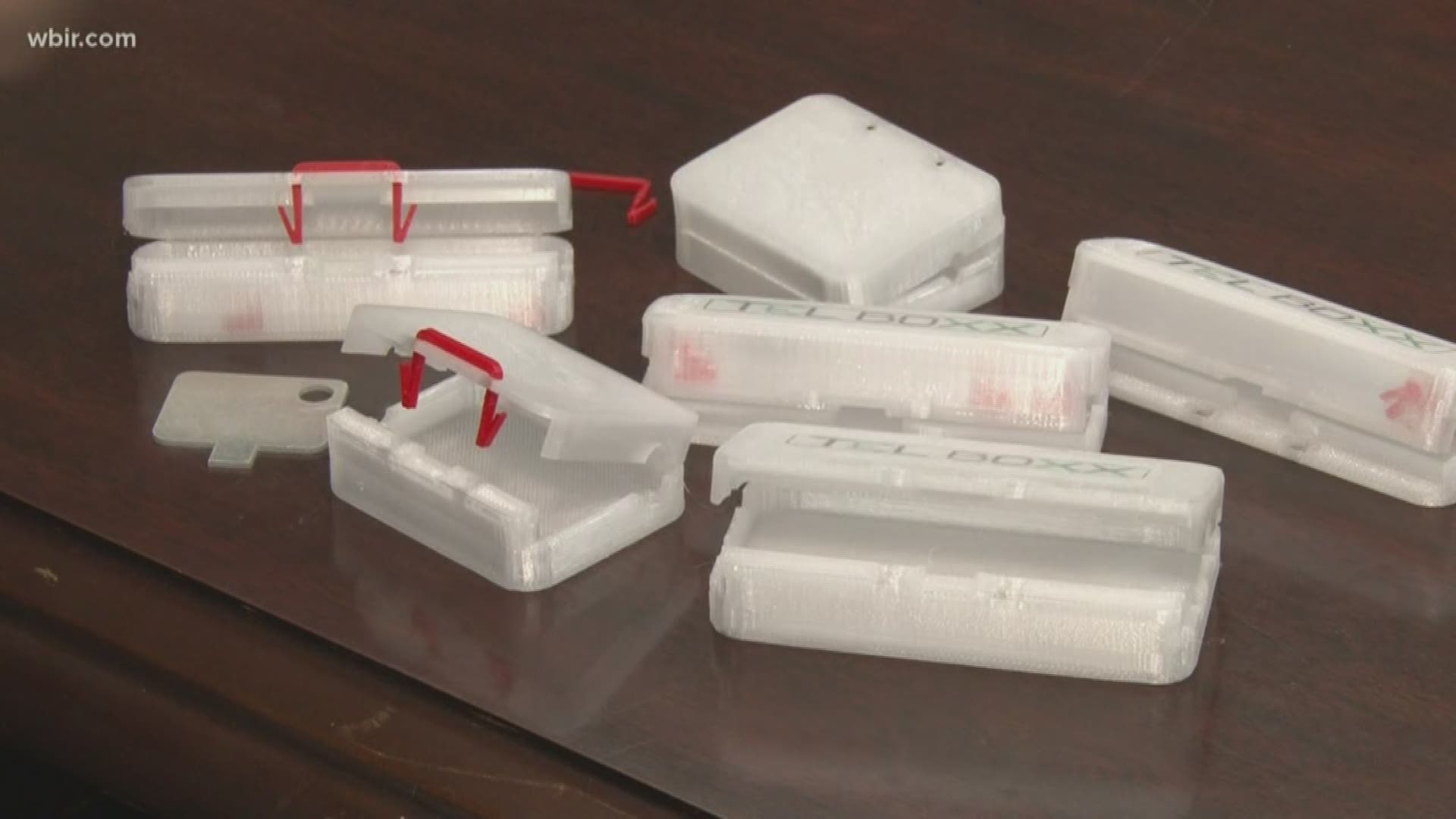KNOXVILLE, Tenn. — A small, 3D printed box is helping hospitals nationwide know if their patients are tampering with their IV lines.
It's called the TEL BOXX.
That stands for "tamper evident lock" box.
It comes in different sizes to fit around the ports of an IV PICC line and drip bag.
This device aims to combat a problem doctors keep seeing in the wake of the opioid epidemic.
Drug abusers in hospitals across the country are using the PICC lines in their arms to shoot drugs like heroin directly into the blood stream.
"There's an interface there that patients can tamper with and simply open up. It won't leak and they're taking needles filled with drugs and injecting directly into their blood stream, directly into their heart," said Matthew Mench, head of the Department of Mechanical, Aerospace and Biomedical Engineering in UT's Tickle College of Engineering.
That then leads to infections that can kill patients, or at least mean month-long hospital stays.
More in-hospital infections affect that facility's medical reimbursement rates.
"Every patient in the hospital that gets an infection, it's the hospital's fault," said Mench. "Unless the hospital can show that the patient has somehow tampered with the line."
That's what happened at UT Medical Center a couple years ago, so doctors came to Mench hoping for a solution.
He came up with the 3D printed TEL BOXX.
"Put the pin in and secure it," he said. "The box is now secured and there's no way I can get this open without the box breaking."
The TEL BOXX goes around the IV port and the pin can easily be broken by staff in an emergency.
But nurses and staff can tell immediately if a patient has opened it, because once you open it, it won't close without a new pin.


"You break it, open it up, and you can see the evidence that it's been broken in both pieces."
The broken off pieces stay inside the TEL BOXX, giving medical personnel all the proof they need.
If the patient gets an infection this way, the hospital has proof it was done by the patient and not as a result of staying in the facility.
This prototype was put to the test by UT nurses who gave feedback to make the design better.
Now, it's being used at 11 hospitals in eight different states.
One nurse in Pennsylvania gave this review to UT:
"A high-risk patient who we always suspected of tampering with the line left the facility within a couple hours."
Mench said the TEL BOXX can also be used for young kids who have to wear an IV port so they don't accidentally tamper with the line.
"We're excited that there's something that help hospitals save money and resources that they can put toward their patient care," said Mench. "We're also excited that this is something that can affect addicted patients that need help in a positive way."
UT is looking for manufacturers that will license the TEL BOXX and make it a product accessible to all hospitals.
Right now about 1,000 boxes of different shapes and sizes are in use.

